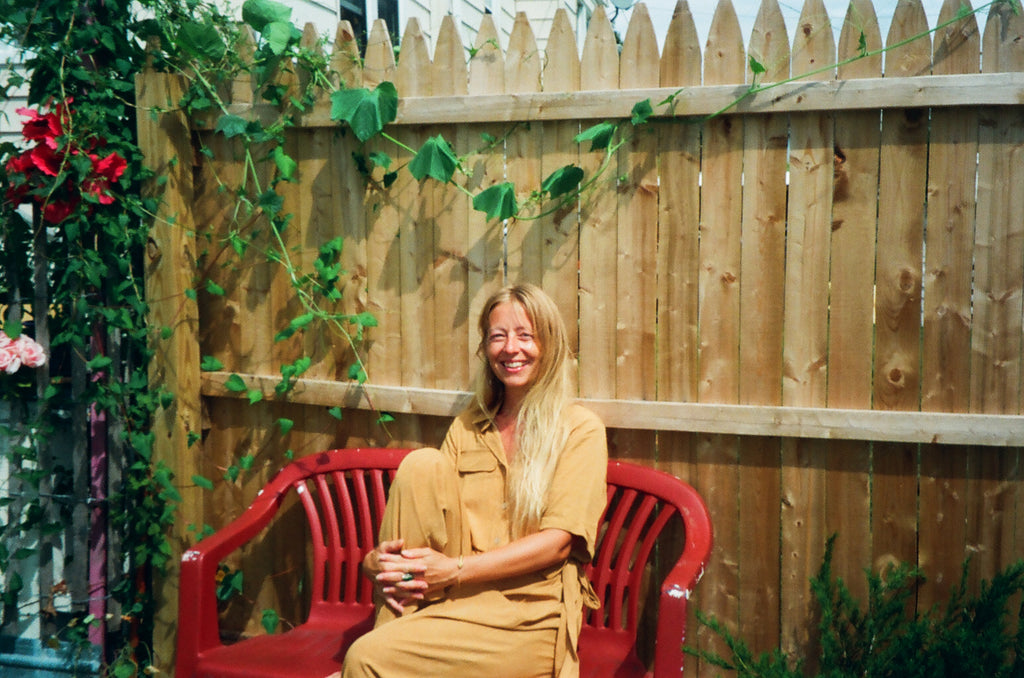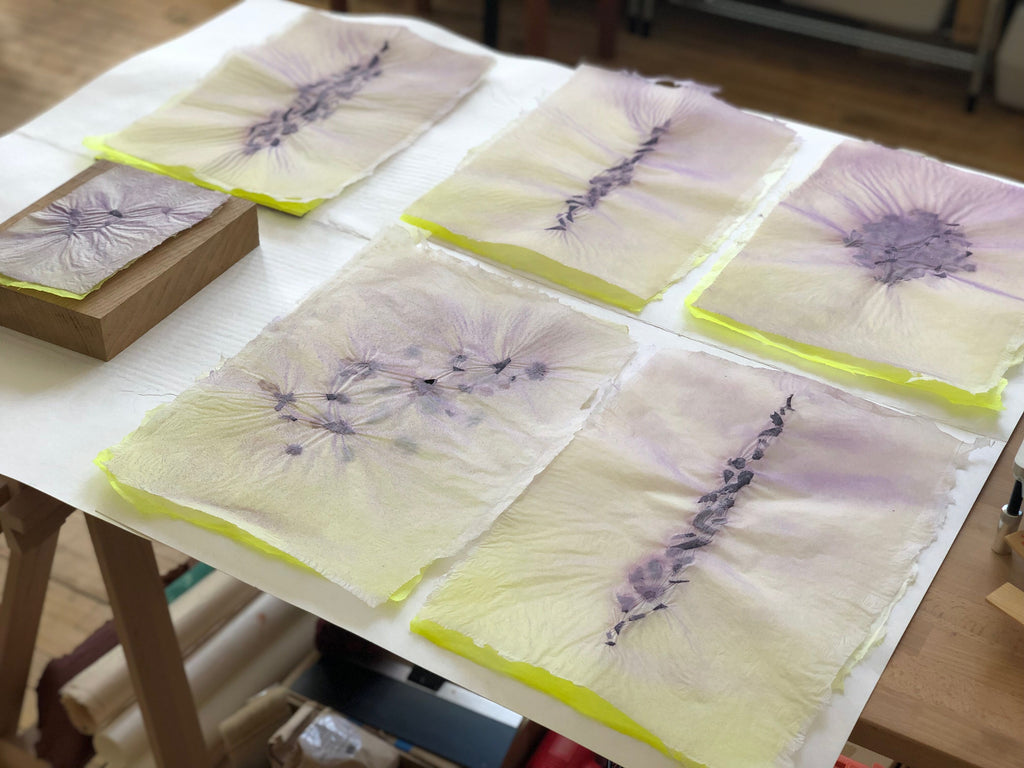CHRISTINA CHAN, CHOY DIVISION

Mahogany leaves Swietenia macrophylla have been traditionally used as a natural dye source in Southeast Asia and parts of Central and South America. The leaves contain tannins and other plant compounds that produce earthy hues, often ranging from soft browns to reddish tones. Indigenous communities historically used mahogany leaf dye for coloring textiles, baskets, and even as a natural ink. Traditionally, the leaves are collected, dried, and boiled to extract the dye, with fabric or substrate then soaked in the solution to absorb the color. This process may be repeated or modified with natural mordants to deepen or shift the hue.

 Christina (with Momo) wears the Colorant Bruce Cardigan and Pants dyed with Catappa Leaves.
Christina (with Momo) wears the Colorant Bruce Cardigan and Pants dyed with Catappa Leaves.

How do you decide which culturally significant crops to grow each season?
Some of what we grow is based on what I grew up eating and what I like to cook and eat, but a lot of our crop plan is shaped by members of our community and the plants they hold dear. There is a heavy Chinese Cantonese culinary influence because that is what I grew up with, and our farm has grown to include a lot of Korean vegetables and herbs that my crew members and CSA members have taught me about. It is so important to me that we grow food that is recognizable and beloved by numerous members of the Asian diaspora and to celebrate the culinary and cultural diversity that exists within that. Some of our favorite crops on the farm include head mustard, ping tung eggplant, gai lan, flat cabbage, kkaenip, thai holy basil, and watercress.
What moment made you feel like the farm was truly making a difference?
There are a lot of different points in time where I felt like the farm was truly making a difference, and I could answer this in so many ways. But for me, its not about the big things, but the small ways we have impacted individual lives. One CSA member shared that their mother was in love with our vegetables and hadn’t tasted some of these flavors since they were children in Korea. Another friend was brought their grandparents to visit the farm and breathe in the aroma of kkaenip as it rustled in the wind and pick gochu and napa for their kimchi. It’s these moments that really ground the farm’s purpose to bring us together in community through food and land. Another way in which we feel the difference the farm has made is in our mutual aid efforts. We work directly with a pantry in the West Village that serves Chinese elders and the Reverend has shared with us that the culturally relevant vegetables we provide have brought so much joy, excitement, and laughter to their pantry clientele. It has been such a privilege to be able to know our food is going to those who need it most.
What are the biggest challenges you've faced farming this way?
The biggest challenge that I, and all small scale organic farmers face, is climate change. This spring has been particularly brutal with the constant rain. The best growing conditions have everything in moderation- we want some sunshine, some rain, some heat, some cool weather. The constant cloudy and wet weather has turned some of our fields into lakes and the plants struggle to grow without any sunlight. The excessive moisture is an excellent breeding ground of insect pests and disease. Of course then we are hit with a three day heatwave, roasting both the farmers and plants. The lack of predictability in weather makes each season riskier as we just don’t know which of our crops will make it and which won’t. In the six years I’ve owned and managed my own farm, no two years have been the same, and we are constantly adapting our plans each day dependent on the weather.
https://www.choydivision.com/
@choydivision
















































